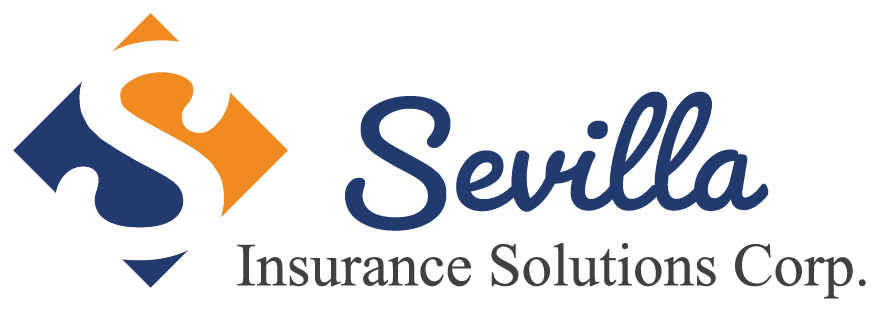Business Auto Insurance
Commercial/Business automobile coverage provides business owners coverage for liability and physical damage arising from automobiles they own, rent or borrow.
Commercial automobile coverage is like the coverage you may carry on your personal auto; however, commercial automobile exposures can be more complex requiring specialty coverages to be considered based on the individual needs of the business. Commercial automobile coverage can protect your company from any liability stemming from automobiles used in your business or any damage to the covered automobile.
A Business Auto Policy (BAP) has the flexibility to provide coverage for business, personal, non-owned, or hired autos based on the coverage purchased and applied to each scheduled auto. In other words, automobiles can be separately scheduled along with corresponding coverages. Coverage can differ by vehicle and a symbol or multiple symbols will designate the coverage assigned to a scheduled auto. These symbols are referred to as covered auto symbols and use a simple numerical system (1-13).
The automobiles are classified by weight (light, medium, heavy, extra heavy) and by type of use (private passenger, service, commercial). Unlike personal auto policies that separate bodily injury and property damage limits (split limits), BAPs commonly utilize a Combined Single Limit (CSL) for the limit of insurance. This creates higher limits for both coverages, including per occurrence limits.
Important Terminology
Symbol: the symbol shown designates which autos are covered under the commercial automobile policy. Rates will vary by the symbol chosen.
Liability limit: This is the most the policy will pay for Bodily Injury and/or Property damage. The most common limit of liability in commercial auto is a combined single limit which means that is the most the policy will pay for damages arising out of a single accident. The CSL is for both bodily Injury and/or property damage. Split limits where specific limits apply to bodily injury and property damage separately and is also available. The minimum liability of liability is $1M.
UM/UIM is uninsured/underinsured motorist: This coverage pays for injuries, such as medical expenses, that result from an accident caused by a driver who has too little insurance or no insurance at all to cover the injuries. This covers expenses for you and your passengers and it includes medical bill and lost wages. The UM/UIM minimum limit is $1M. Why insured yourself for less than you would insured others.
Medical payments: Pays for the medical or funeral expenses of covered drivers and passengers after an accident, regardless of fault. The minimum limit for this is $5K.
Comprehensive coverage: Pays for damage to your auto caused by an event other than a collision, such as fire, theft or vandalism. If you hit an animal, or if your auto is flooded or stolen.
Collision coverage: refers to coverage for vehicle damage caused by a collision with another vehicle or an object. It pays for the damage even if it is the fault of the insured. The insurer will pay for the damage, with the insured paying a deductible.
Limit of Insurance loss settlement: A clause gives the carrier options on how to pay for a loss to a covered auto. The insurer can either pay the actual cash value of the damaged or stolen property with other property of like kind and quality. The ACV will be decided at the time of loss with adjustment for depreciation and physical condition.
Deductible – The out of pocket expense before an insurer will pay any expenses. Both comprehensive and collision require deductibles.
Rating Factors
Symbol assigned to the vehicles.
Limit of liability does affect the pricing of the risk as well as the types of coverages chosen. The lower the limits the lower the price, however, with commercial insurance it is important to keep in mind low limits are NOT advantageous.
The year of the auto does impact rates, as does the vehicle make and model. Each type of year, make and model has different safety and other features which contribute to the cost of repair of that vehicle.
Vehicle usage is very important and breaks down as follows:
- Service– which does not include transportation of any property except for tools, equipment, and supplies to and from jobs;
- Retail – which includes transportation of property to and from individual households;
- Commercial – which applies for any other type of transportation except service and retail.
The gross vehicle weight has a direct impact on the pricing of the policy. Vehicle weights are broken out as follows:
- Private Passenger – 2-door coupes, 4-door sedans, sport utility vehicles up to 10K lbs. GVW
- Light Trucks – up to 10K lbs. GVW – Light trucks are typically a pick up or van type vehicle
- Medium Trucks 10,001 lbs. to 20K lbs. GVW – These vehicles can also be pick up or van type vehicles and are usually considered 1 ½ ton to 2-ton vehicles
- Heavy Trucks weigh between 20,001 lbs. and 45K lbs. GVW – these vehicles are larger trucks used to haul supplies or other items and they are often referred to as a 2 ½ ton to 4 ½ ton vehicles and in some cases, up to 5 tons.
- Extra Heavy Trucks – over 45K lbs. GVW – Many trucks falling into this category will be the very large dump trucks and larger mix-in-transit trucks. Vehicles in this category typically have a nominal rating of 4 ½ tons and above.
- Heavy Truck Tractors – up to 45K GCW (gross combined weight) this is a category for smaller tractors and trucks with a 5th wheel for hauling semi-trailers or mobile homes
- Extra Heavy Truck Tractors – over 45K GCW – most tractors fall into this category. It does not matter is the tractor is single or rear axle or dual rear axle
- The heavier the vehicle the higher the rate due to the damage the vehicle can do to others.
Trailers – any trailer over 2K lbs. must be added to the auto policy for coverage to be in force
The radius also known as number of miles, is also a rating factor. If an insured travels within a 50-mile radius this is considered local, 50 to 200 miles is considered intermediate and over 200 mile is considered long distance. The less distance traveled the lower the rate.
Cost New is a factor when rating physical damage on the vehicle itself. The premium is calculated off the cost new of the vehicle and the make model and year.
Business Quote Request
OUR LOCATION
600 South Amphlett Blvd San Mateo, CA 94402
1-650-343-8522
CA License #0L92280
© Copyright 2025 Sevilla Insurance Solutions Corporation | All Rights Reserved
Site by ICA Agency Alliance
600 South Amphlett Blvd San Mateo, CA 94402
1-650-343-8522
CA License #0L92280
© Copyright 2025 Sevilla Insurance Solutions Corporation | All Rights Reserved
Site by ICA Agency Alliance

